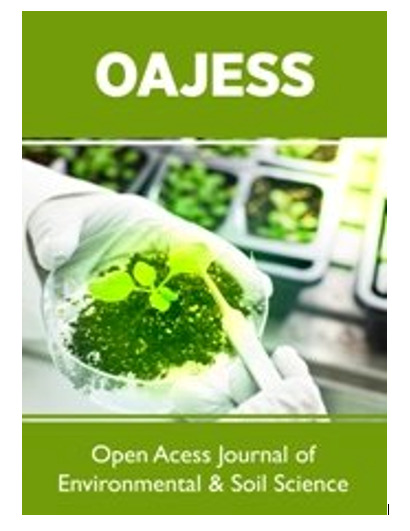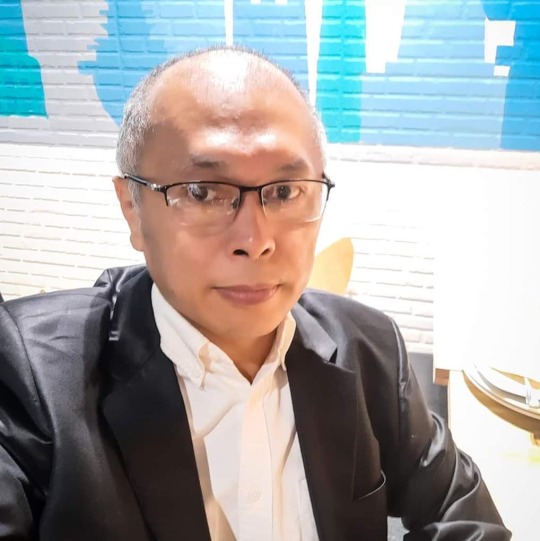#swmps
Note
Sooooo excited for blff 2024. I sent out prompts for the first time (this is my third or fourth year following the event) and I'm very excited to see the prompts that will be chosen. Can I suggest something to liven up the festival even more? You could retweet and reblog posts from people who talk about the prompts because they are interested or praising them. Us In previous years I read several fanfics because I met the authors when the fanfics were selected and now they are authors that I swmp
We're glad you're excited! We are too. 😁 We do RT posts when people select their prompts because that's when readers can start following along with them depending on which prompts they're really excited to read. Maybe next week, which is the week between when prompt submissions end and when author sign ups open, we will RT some things where people are discussing prompts they're excited about!
3 notes
·
View notes
Text
I got back into Zappa for a specific period—-in 1971 he was thrown by a fan to a hard concrete orchestra pit, giving him severe injuries, including head trauma, a permanently shorter left leg and a lower voice due to larynx injurie by a 1/3 octave (I think more like 1/4, but the tessitura…anyway) he was wheelchair bound for a few years.
He wound up during those years he was wheelchair bound making a lot of songs about depression, how scary it was to go out there again—-“Stinkfoot”, “It Just Might Be A One-Shot Deal”—-all his incredible jazz albums and funk albums George Clinton, SwMp Dogg, Erykah Badu, and Thundercat and Kendrick loved so much—-and that’s the central theme. “It’s scary, but you have to do it.”
(this was the news that was delivered to Lou Reed about Zappa that made him say “hallelujah!”…critics were weirdly unsympathetic for a celebrity…I mean, he got back and went back to that same audience participation…)
6 notes
·
View notes
Text
Finished mermaid swmp!!!!!!{ I think. probably have other endings? Hm
5 notes
·
View notes
Text
Lupine Publishers | Battle Against Solid Waste: Contribution of University Belt Barangays Towards Clean and Disaster-Prepared City

Abstract
Solid waste is one of the major problems in the urban communities due to congestion and improper garbage disposal. This problem may lead to some health and disaster-related issues. University Belt Area (UBA), a congested place in Manila City, Philippines generate tons of solid waste materials daily. Given this condition, it is significant to know the response of the local government units (LGUs) in addressing this type of problem. Thus, this study investigated the solid waste management programs (SWMP) implemented by UBA barangays and its problems encountered in implementing the said programs. The awareness of the residents on SWMP and their suggestions for effective implementation of these programs were also determined. An in-depth interview was conducted among barangay officials. Small group discussion (SGD) was conducted among the selected residents. Thematic analysis was used to interpret the qualitative data while descriptive statistical tools were used to analyze the quantitative data. Findings revealed that programs implemented by ten barangays in UBA are categorized into educational, infrastructure, waste reduction, and regular cleaning activity. These programs are known to most of the residents who participated in the study. In the process of implementation, the LGUs are facing some constraints. These constraints include lack of discipline among the residents, lack of funds, irregular collection of waste materials, location of the barangay, and poor segregation practices. To effectively implement the afore-mentioned programs, the residents suggested some important recommendations. These encompass implementation of the appropriate barangay resolutions, raising public awareness, and imposition of penalties for the violators. Stakeholders should provide strong support for SWM agenda of UBA barangays. Policy makers should consider these data to formulate sound policies which can address the problems on solid waste. The barangay council should review Republic Act 9003 and consider collaboration with Ferris Wheel Project for better implementation of the programs.
Keywords: Barangays; Solid waste; Solid waste management programs; University belt area; Urbanized areas
Introduction
Every day the world is getting more urbanized. The rate of urbanization is increasing at an alarming rate. United Nations Department of Economic and Social Affairs (UNDESA) reported that 34% of the world’s total population in 1960 was living in the urban centers. In 2014, this rate increased to 54% [1]. This increase in urban population is brought by the natural increase due high fertility rate of the urban population and rapid rural to urban migration [2]. The rapid rate of migration is attributed to the pull factors inherent to the urban environment itself [3] like better job opportunities, access to health and educational facilities, and high standard of living. University Belt (U-Belt) area (Figure 1) in Manila, Philippines (Figure 2) is an area where colleges and universities are concentrated, hence the name implies. This area is the home of more than fifty higher educational institutions. The Central University Belt (CUBE) area is a seat for twenty universities and colleges. As Filipinos put a high regard for quality and responsive education, population over in this place has increased tremendously. This rise in population then is considered as contributing factors in the escalation of the amount of waste materials generated in the urban setting. According to National Solid Waste Management Commission Reports (2015). the estimated the amount of solid waste generated in 2010 in Manila City alone was 2,990,814 metric tons. In 2014, this figure increased to 3,595, 593 metric tons. There is, however, no specific information that pertains to the case of U-Belt area.
The rise in population in the U-Belt area also resulted to the emergence of additional commercial establishments, dormitories, and other infrastructure development. This infrastructure development resulted to changes in the land use and the increase in the urban surface sealing which increases the amount of surface run-off and decreases the ground water recharge [4]. This condition serves as a challenge to the Local Government Units (LGUs) on how to deal with this problem. The problems on improper waste management and high percentage of impermeable land make U-Belt area highly vulnerable to the devastating effects of flood. High amount of waste materials and improper disposal of these items make people highly prone to the diseases (National Solid Waste Management Commission Reports, 2015) [5]. From the prevailing condition of this place, the researchers came up with the framework on the goals of the implementation of solid waste management programs in U-Belt area (Figure 3). The current modified framework focuses on how the dirty, disaster-prone, and disorder U-Belt area can be converted into clean, disaster-prepared and orderly place (Figure 1). This framework was modified from the framework of Discipulo [6] on urban renewal study.
From the existing problems on solid waste management in the U-Belt area, this study investigated the contribution of the U-Belt barangays towards a clean and disaster-prepared city. Specifically, this study determined the solid waste management programs implemented by the barangays around the University Belt, identified the problems encountered by the communities pertaining to the implementation of the programs, determined the awareness of the residents in the said programs, and identified the suggestions of the residents for effective solid waste management programs implementation. Data obtained from this study is vital in policy making and urban planning of LGUs. This will also agitate the stakeholders to support and participate in the program implementation.
Materials and Methods
Research design
The research design employed both descriptive and qualitative approaches. Qualitative research aims to interpret meanings, descriptions, and symbols [7]. The goals of this type of research are to provide answers to the why’s and how’s. On the other hand, descriptive approach was used to describe characteristics of the population being studied [8]. This approach answers the question of “what” in the study. Objectives 2 and 4 were answered using qualitative approach while objective 3 was answered using descriptive method. Both qualitative and descriptive approaches were used to answer objective 1.
Research locale
The study was conducted in the U-Belt area. The name was given to this area because of the high concentration of the colleges and universities in this place. Originally, this name was given only to San Miguel district but technically it includes the nearby districts such as Quiapo, Santa Cruz. This area covers Mendiola Street, Morayta Street (now Nicanor B. Reyes Street), eastern end of Azcarraga Street (now Recto Avenue), Legarda Street, western end of España Boulevard, and the different side streets (Figure 4). This study covers the 10 barangays as given in Table 1.
Respondents of the study
The participants of the study were the 7 chairperson, 3 barangay councilors, and randomly selected residents of the ten barangays in the U-Belt Area. Ten barangay chairpersons and several barangay councilors were asked about the solid waste management programs implemented by their respective barangays and the problems they encountered during the implementation of the said program in an in-depth interview. The councilors interviewed in this study were the heads of the committee on health and sanitation. Selected residents were asked about their awareness on solid waste management programs of their respective barangays and their recommendations for effective implementation of the said programs during the small-group discussion (SGD).
Research instruments
Two research instruments were used to gather the data needed in this study. These instruments were the interview guide questions for in-depth interview and guide questions for small group discussion. The contents of these instruments were validated by the experts in the field of research and solid waste management.
Data collection procedure
In order to gather the data needed for the study, the researchers did an in-depth interview with the barangay chairpersons and barangay councilors, focus-group discussion with the randomly selected residents, and regular observation was also conducted to validate the results. The methods in the in-depth interview and small group discussion were patterned from the suggestions of Yukalang et al. [7]. The items in the questionnaires were based from the ideas of Yukalang et al. [9] and McAllister [10].
In-depth interview
An in-depth interview with eight barangay captains, 1 barangay councilor, and 1 barangay secretary was conducted by the researchers to determine the solid waste management programs implemented by the barangays around the U-Belt area and the problems encountered by the communities in the process of implementation of the said programs. The researchers prepared the guide questions for interview ahead of time. The guide questions were validated by the expert in the field of research and environmental issues and concerns. The English version of the guide questions was translated into Tagalog so that the respondents can understand better and they can freely engage in the conversation. The researchers asked permission to record the conversations from the barangay captains, barangay councilor, and barangay secretary. Field notes were also utilized to record pertinent information during the interview.
Small group discussion
Eight small group discussions were conducted during the duration of the study. The number of participants and date of discussion in the selected barangays in the U-Belt areas during the discussion are reflected in Table 1. The demographic profile of the participants such as age, occupation, and highest educational attainment were noted during the onset of the activity. Each participant was asked regarding his/her awareness about the implemented solid waste management programs in his/her barangay.
Observation
In order to counter-check the information disclosed by the barangay chairpersons and councilors, regular observations were conducted by the researchers. A weekly observation on the implementation of the solid waste management programs and the difficulties associated with the implementation of these programs was done from March to September 2017.
Data analysis procedure
After the collection of data, the data gathered were analyzed using descriptive statistical tools and thematic analysis. The quantitative data were interpreted using the descriptive statistical tools such as frequency counts and relative frequency. Meanwhile, the qualitative data were analyzed using thematic analysis. In this method, patterns or themes within data were identified, analyzed, and reported [7]. Patterns across data sets that are important to the description of a phenomenon and are associated to a specific research questions are referred as themes [11]. The themes generated from the data were validated by the experts in the field of research and solid waste management.
Results and Discussion
Solid waste management programs in the U-belt areas Results of the in-depth interview indicated that the programs implemented by ten barangays in the U-Belt areas are categorized into educational, infrastructure, waste reduction, and regular cleaning activity (Figure 5). Under educational programs, barangays implemented waste segregation campaign and information campaign. Also, they strictly imposed the “No segregation, No Collection Policy.” They also conducted the massive information campaign about proper ways of segregating of the waste materials as mandated by Republic Act 9003. Barangays are actively allotting budget for infrastructure which will counter the disaster which may be brought about by improper solid management. They have been allocating budget for repairing drainage system and constructing material recovery facilities. Material recovery facility serves as an area to store non-biodegradable materials prior to disposal.
In terms of waste reduction, barangays are now passionate in campaigning for the recycling activities. They encourage their residents to turn waste materials to raw materials for producing valuable products like lanterns and decorative stuffs. Regular cleaning activity, such as regular clean-up drive and street sweeping has been practiced by the local government units (LGUs) as a support to the solid management programs. The specific programs implemented ten barangays in the U-Belt areas is indicated in Table 2. Findings showed that out of ten barangays, seven of them, excluding barangays 395, 398 and 401 are currently implementing the clean-up drive program in their areas. Interestingly, ten barangays practice waste segregation program (Figure 6a). In addition, it was also revealed e that barangays 395, 396, 398 and 402 are implementing the Materials Recovery Facility (MRF) program (Figure 6b). Moreover, the results showed that barangays 395, 396, 397, 399 and 400 are active in implementing the information campaign program concerning the battle against solid waste. Barangay 400 is the sole barangay which is regularly doing drainage maintenance (Figure 6c). Findings also showed that all the barangays in the U-Belt are currently implementing a daily street sweeping activity (Figure 6d) in their barangays. Barangays 400 and 402 are the only barangays which are implementing the recycling activities in the University Belt (Figure 6e & Figure 6f).
Over the years rapid urbanization is taking place in Manila City, Philippines. This phenomenon was due to economic and social reasons. Consequently, the amount of waste materials generated also increases. Bernardo [12] showed that the households in the city generated an average of 3.2Kg of solid waste per day, or 0.50Kg/capita/day. In 2010, the estimated amount of solid waste generated in Manila was 2,990,814 metric tons and it increased to 3,595, 593 metrics in 2014 [4]. The existence of the different programs on solid waste management in ten barangays in the U-Belt area are the response of the various communities to the alarming problems associated with the elevating amount of solid waste generated in the congested communities. These programs are the manifestations that these barangays are abiding to the important provisions stipulated in Republic Act 9003, otherwise known as the “Philippine Ecological Solid Waste Management Act of 2000.
During the SGD, all participants were asked about their awareness on the programs implemented by the barangays in the U-Belt area on solid waste management. Findings of the investigation showed that 89% (31) of the participants are aware about the programs while 11% (4) participants are unaware (Figure 7). Generally, the results manifest that most of them have an idea about the implementation of the aforementioned programs. Awareness of the people about the programs is the outcome of the massive information drive and visibility of the infrastructure projects of the local government units. The high percentage of awareness on solid waste management programs among the residents in the U-Belt barangays is an indication that people are vigilant and participative in the programs and projects of the communities. Their participation ranges from attending the general assembly of the barangays up to abiding the proper segregation policy. On the hand, there are residents that remain not ware about the programs and policies of the barangays on solid waste management. Perhaps, they are not watchful regarding what is going to their communities and at the same time they are not participative to the activities of their barangays.
Constraints on solid waste management
Constraints encountered in the course of the implementation of every project and program makes the implementation itself very challenging. The problems encountered by the barangays in the U-belt areas in the implementation of the solid waste management programs are given in Figure 8. Findings showed that all ten barangays are currently facing the problem on the lack of discipline among the residents. They throw their garbage anywhere. They are particular of the designated places for their waste materials. Barangay 399 and Barangay 404 consider deficiency of funds as a major problem in the implementation of the program on solid waste management. Furthermore, it is also indicated above that 7 out of 10 barangays except for barangays 399, 402 and 403 are experiencing problem in terms of irregular collection of wastes. Findings also show that the barangays 395 and 397 are facing a problem on their location, which causes these barangays to produce more solid waste materials.
The constraints experienced by the U-Belt barangays in connection with the implementation of solid waste management programs in their communities are typical issues observed also in the other urbanized cities in the Philippines. For instance, Reyes & Arturo [13] observed several problems encountered by the community people in the implementation of solid waste management practices in the different barangays in Batangas City, Philippines. In their study, they found that the increasing population, inadequate government policies, public indifference (public don’t care), inefficient collection of garbage, rapid urbanization, non-operation of a good disposal facility, irresponsible government officials, lack of awareness among the people regarding the effects of solid waste management practices to their health and the environment, and lack of training on proper solid waste management practice are major barriers in implementing effective and efficient solid waste management programs.
In the developing countries however, there are constraints associated with solid waste management implementation. These constraints are categorized into culture, education, and microeconomics; infrastructure and technology; and policy, institutions, and macroeconomics [10]. In terms of culture, education, and microeconomics, the major constraints comprise the attitude and behavior gap of the people and lack of campaign on education and awareness. Major constraints under infrastructure and technology include budgetary constraints, inadequate service and operational inefficiencies, ineffective technologies and equipment inadequacy, lack of landfill disposal, and limited utilization of waste reduction activities. Under policy, institutions, and macroeconomics, the major constraints encompass lack of policy, poor enforcement and responsibility, and lack of monitoring and regulation.
Recommendations of the residents for effective implementation of solid waste programs
Some of the programs on solid waste management are not effectively implemented due to the political, educational, and socio-economic reasons. During the focus group discussion, the residents suggested some recommendations to the barangay officials for effective and efficient implementation of the solid waste management programs in the U-Belt Areas. These include implementation of the appropriate barangay resolutions, raising public awareness, and imposition of penalties for the violators.
Implementation of the appropriate barangay resolutions
One of the best strategies in order to ensure the effective implementation of the solid waste programs is to pass the appropriate barangay resolutions. The residents said that the existing resolutions are not enough to support the implementation of the aforementioned programs. Hence, the barangay council needs to pass some additional resolutions aside from “No Segregation; No Collection Policy.” These resolutions once passed should be disseminated to the general public. According to the respondents, in order for the residents to become fully aware of these resolutions, the council should ensure maximum attendance of the residents during the barangay assembly. In the era of rapid urbanization in the cities of the third world countries (e.g. Manila), appropriate policies should be implemented to address the problems associated with high urbanization growth [14]. In the case of the barangays in the U-Belt Areas, in order make solid waste management programs effective the policies and resolutions that may focus on allotting budget for the implementation of the programs, improving the linkages to the non-governmental organizations (NGOs), private sectors, and cause-oriented groups and proper spatial planning.
Raising public awareness
The success of the programs and projects on solid waste management strongly depends on the support of the stakeholders and the general public. The participation of these groups of people can be maximized if they have been properly informed. As revealed by the residents, the barangay should boost the awareness of the people through educational campaign and massive public information dissemination drive. The campaign for solid waste management programs in the U-Belt area can be disseminated well through posting in the bill boards and other public places. Campaign can be done during the barangay assembly; hence, the barangay officials should ensure the maximum attendance of the residents. Cultural and literary programs through songs and poetry can also be explored in order to boost the awareness of the people thriving in the U-Belt Area.
Imposition of penalties for the violators
According to the participants in the SGD, there is a need to impose penalties to the violators in order to make implementation of the solid waste management more effective. Violators, in the context of this study; refers to the residents who are not abiding with the policies and resolutions about management of solid waste. For instance, these people don’t dump their garbage materials in the right bins and throw their waste materials in bodies of water. Those who are doing such should be penalized by the barangay councils. The penalty could be letting them engage on community service or pay offenders can pay a certain amount of money. Community service, on the other hand, could include cleaning the public places such plaza, streets, and bodies of water and repairing of the drainage system. Imposing these types of penalties will create a culture of discipline and support among the residents.
The success of the implementation of solid waste management can be attributed by three major factors. These factors include people’s orientation and strong political leadership, strong collaboration among the different sectors of the community, mass information, education, and communication campaign, and linkage and networking with different agencies and organizations [15,16]. Mc Allister [10] considered potential interventions in order to implement solid waste management programs effectively and efficiently. These interventions include intensified education and awareness campaign, enhancement of public participation, promotion of the incentive scheme, improvements in service operations, improvements in the accessibility of the technologies, utilization of the recycling initiatives, improvements in disposal system, creation of landfill, enhancement in the funding management, and proper enactment and enforcement of the policies and programs.
Conclusion
The programs implemented by ten barangays in the U-Belt areas are categorized into educational, infrastructure, waste reduction, and regular cleaning activity. These programs are known to most residents of the area. In the process of implementation, the LGUs are facing some constraints. These constraints are: lack of discipline of among the residents: lack of funds: irregular collection of waste; location of the barangay; and lack of segregation. To effectively implement the aforementioned programs, the residents suggested some important recommendations. These include implementation of the appropriate barangay resolutions, raising public awareness, and imposition of penalties for the violators (Figure 9).
Furthermore, the concept of eco-city [17,18] should be integrated by the U-Belt barangays in their campaign for effective solid waste management programs. The idea of composting [19] in the urban setting like enzyme-enhanced compositing and vermicomposting [20-24] should also be considered for the aforementioned program. For the future research endeavor, a greater number of respondents should be considered. Hence, the entire University Belt area should be covered in the succeeding research activity. From the major findings acquired in this study, the authors came up with the extension program of SHS Department of UE Manila known as “FERRIS WHEEL PROJECT” (Figure10). It is a holistic, multi-sectoral, and multi-disciplinary project which aims to further raise the awareness of all sectors in the U-Belt community about problems associated with solid waste management. These sectors include business, youth, local government unit, academe, and people with disabilities.
For more information about Open Access Journal of Environmental and Soil Sciences please click https://lupinepublishers.com/environmental-soil-science-journal/
For more Lupine Publishers please click on below link
https://lupinepublishers.com/index.php
#lupine#lupinepublishers#lupinejournals#environmental and soil sciences#agrology#biogeochemistry#environmental science#geomicrobiology#soil fertility#soil microbiology#lupine publishers llc#environmental health#agricultural soil science
4 notes
·
View notes
Text
SWM gaat slagvaardiger worden

De Surinaamse Waterleiding Maatschappij, SWM, gaat slagvaardiger worden. Er zijn in het kader hiervan veel activiteiten gepland die het bedrijf ten uitvoer zal brengen.
Dit vertelde projectmanager van het Internationale Ontwikkelingsbank(IDB) project van Water Supply Modernization Program, SWMP, Alwin Linger gisteren tijdens een persconferentie van het bedrijf te Poelepantje. De leidinggevende geeft verder aan dat het belangrijk is om te praten over de voorbereiding van de projecten die gepland zijn. Dit omdat zaken niet makkelijk gaan zoals velen denken.
Linger geeft aan dat de voorbereiding van projecten heel veel input kost. “Niet dat je vandaag een overeenkomst sluit en morgen zijn de buizen in de grond.” Hij stelt dat er behoorlijk wat tijd gekoppeld is aan de uitvoering van projecten. “De financiering neemt veel tijd en ook in de uitvoering moet je je voorbereiden.” De manager zegt dat de projecten die gepland zijn in de uitvoer van het masterplan van het bedrijf allemaal aan elkaar gekoppeld zijn, maar ze allemaal in een chronologische volgorde uitgevoerd moeten worden om te voorzien in de drinkwaterbehoefte.
De manager geeft aan dat het project van de IDB, voordat het uitgevoerd kon worden, dwars door de organisatie is gesneden om na te gaan wat allemaal nodig is en wat moet gebeuren. Dit alles bevindt zich in het implementatieplan. Het plan is technisch, maar bedoeld om de organisatie effectiever, efficiënter en slagvaardiger te maken. "Daarom zijn een aantal actieplannen uitgezet en er is nu eenmaal een beperking wat betreft het budget." Linger zegt dat de directeur heeft aangegeven dat het budget van de SWM beperkt is en dit de reden is dat niet alle aspecten van het masterplan uitgevoerd kunnen worden. Het gaat dan niet alleen om zaken die in het masterplan voorkomen, maar ook andere zaken die veranderd moeten worden om verbetering te brengen in de dienstverlening.
Linger zegt dat er een overeenkomst is getekend in 2022 om het 'Water supply modernization program’ uit te voeren. Dit project heeft een looptijd van 6 jaar en heeft een budget van 25 miljoen. Hij stelt dat dit soort projecten een strikte naleving hebben en met zich zal meebrengen dat de infrastructuur van de waterproductie zal worden vergroot.
Read the full article
0 notes
Photo



We got our hands on the new metal frame Smith & Wesson M2.0 Competitor. The competitor will take our 140mm +6 mag extensions! Awesome!
Thanks to Darrell for bringing in his new firearm and letting us play with it.
Our SWMP 140mm mag extensions can be found here: https://taylorfreelancestore.com/s-w/s-w-m-p/
0 notes
Text
Haryana to setup solid waste management plants in the state
Haryana to setup solid waste management plants in the state
IEP Chandigarh, October 13
Haryana Government will set up Solid waste management plants (SWMP) in the state in order to further accelerate the Swachhta campaign. All the districts have been divided into 13 clusters for implementing the solid waste management projects. In the first phase SWMP will be set up in three clusters i.e Bhiwani, Sirsa and Karnal.
This was stated by the Haryana Chief…
View On WordPress
0 notes
Photo

SWMP
The Modular seamless series matrix switchers are the most advanced solution from SEADA technology. Based on advanced crossbar technology, they provide excellent performance from a single chassis at 4K 60Hz 4:4:4 resolution and it also supports picture in picture effect on a video wall to show multiple content.
SEADA are hosting a webinar this Friday at 10:30am for the SWMP. If you are interested and would like to know more about the product, then please register via this link: https://lnkd.in/ev4wiwRi
If you would like any training on any other product, then please do get in touch at [email protected] or 01527 584364
0 notes
Text
no thoughts head mystery bards song from sleep with me podcast
#🎶sleep with me podcast dot com🎶#🎵and were so proud (proud!) that we could dance (dance !)🎵#🎶to be a part of ~night vale presents~🎶#🎵now on with thee show!! :)🎵#its a nice song#sleep with me podcast#swmp#gabe.txt
7 notes
·
View notes
Photo









like or reblog if you save
73 notes
·
View notes
Link
The size of the structure project that you will attempt will decide then you need a site waste management plan set up. The absolute expense for the undertaking including the majority of the materials, work, overhead, and plant is the thing that decides whether you are required to put a site waste management plan London, UK , or SWMP, set up before you get the venture in progress. . For more details visit https://bit.ly/2MQaUtV
#Construction Site Waste#Site Waste Management#Site waste management Company#Site Waste Management Company London#Site Waste Management Plan#SWMP#Construction Waste
2 notes
·
View notes
Text
hhhhh
#if u see me using icons with twilight-ass lighting no u don't#swmp thing caps are rough#i'm not fighting it anymore <3
0 notes
Photo

Paul Gulacy original art from 1983 Swamp Thing movie portfolio, featuring Adrienne Barbeau as Alice Cable
243 notes
·
View notes
Photo

The agony of waiting 😊 presentation and defense of Gitagum 10 Years Solid Waste Management Plan #planner #plannercommunity #environmentalplanner #environment #environmentalplanning #swmp #solidwastemanagement #solidwaste (at Upper Story Serviced Apartments) https://www.instagram.com/p/B4jPxObnzfR/?igshid=189n697cjqh63
#planner#plannercommunity#environmentalplanner#environment#environmentalplanning#swmp#solidwastemanagement#solidwaste
0 notes
Text
Ecology Center in NV opens new livelihood for residents
#PHinfo: Ecology Center in NV opens new livelihood for residents
Villagers of brgy Aurora in Quezon, Nueva Vizcaya sort out various trash for their value. The PLGU has established the Prov'l Ecology Center (PEC) to help LGUs in selling other solid waste products to other outlets.# Photo from BLGU Aurora FB Post
BAYOMBONG, Nueva Vizcaya, March 1 (PIA) - The newly established Ecology Center in this province will not only help local government units in its Solid Waste Management Program (SWMP) but also opens opportunities for residents to earn additional income.
Forester Tito Tanguilig, Provincial Environment and Natural Resources Office (PENARO) chief said the Provincial Ecology Center (PEC) will cater to the province's LGUs in collecting solid waste materials for livelihood and income.
"The PEC will collect the solid waste materials from LGUs, especially those who cannot be sold in their respective communities and bring them to other agencies and organizations for sale," he said.
Tanguilig said the PEC was put-up to address the need to bring recyclable materials to various outlets.
He said they have already established linkages and partnerships with various solid waste management program outlets so that recyclable materials being denied by community outlets will be bought by other buyers.
"In this way, we can bring these solid waste materials to other outlets so that they can be sold for income and livelihood," Tanguilig added. (MDCT/BME/PIA 2-Nueva Vizcaya)
***
References:
* Philippine Information Agency. "Ecology Center in NV opens new livelihood for residents." Philippine Information Agency. https://pia.gov.ph/news/articles/1068229 (accessed March 02, 2021 at 12:49PM UTC+08).
* Philippine Infornation Agency. "Ecology Center in NV opens new livelihood for residents." Archive Today. https://archive.ph/?run=1&url=https://pia.gov.ph/news/articles/1068229 (archived).
1 note
·
View note
Photo

honestly i gotta hand it to google for figuring this one out... villain who swmp diamond... lmao
2 notes
·
View notes